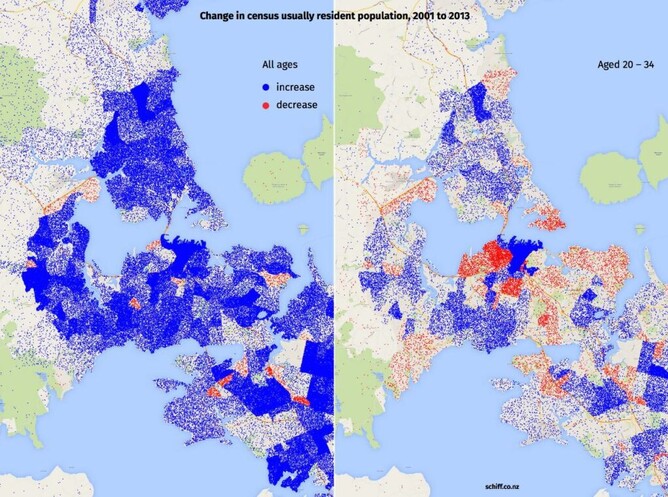youngish adult population
Many people aged in their 20s and 30s are leaving home, entering and/or completing education, are at the beginning of their working lives, and possibly starting families.
Changes in where people in this age group choose to live are interesting because many of these life events mean ‘youngish adults’ are finding new places to live, and are thus relatively sensitive to local housing prices and quality (either for renting or buying). In economist-speak, many people in this age group are ‘on the margin’ of the housing market, and will be sensitive to changes in housing supply and other market forces.
Arguably, a healthy city works well for its ‘youngish adults’ when it enables them to live in areas that have good access to jobs, transport, childcare, and other amenities. As younger adults tend to have lower incomes and fewer assets than older people, housing costs may also have more influence on the ability of younger adults to take risks, such as starting a business or exploring creative interests. And this in turn will affect the economic performance and vibrancy of the city.
Where did youngish-adult Aucklanders live in the early 2000s?
Link to article: Mapping changes in Auckland's youngish adult population - Greater Auckland




